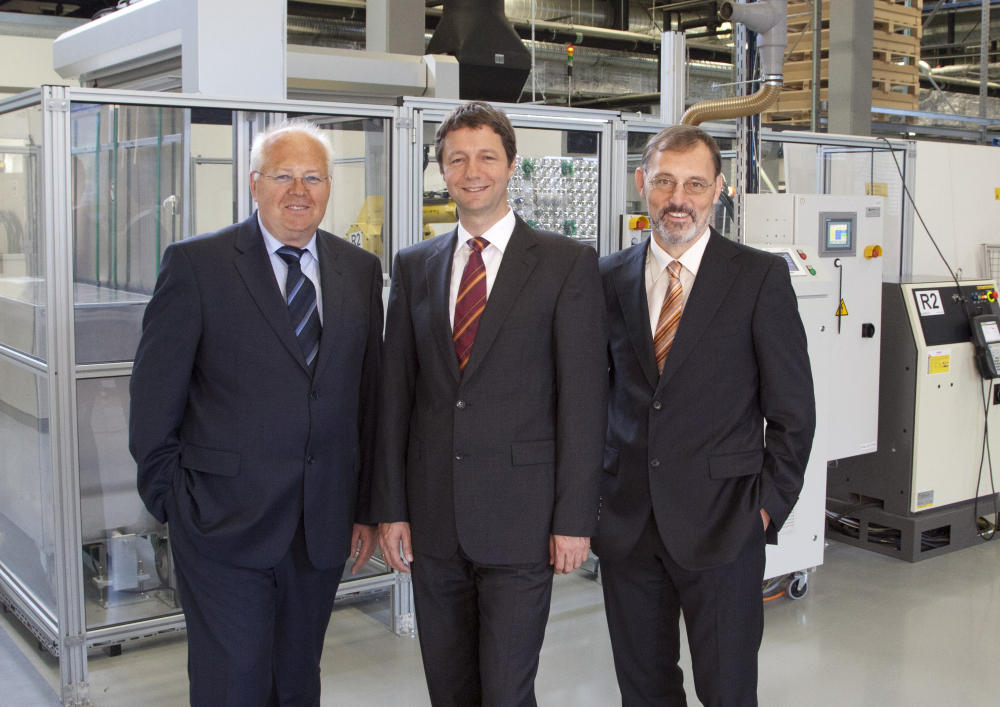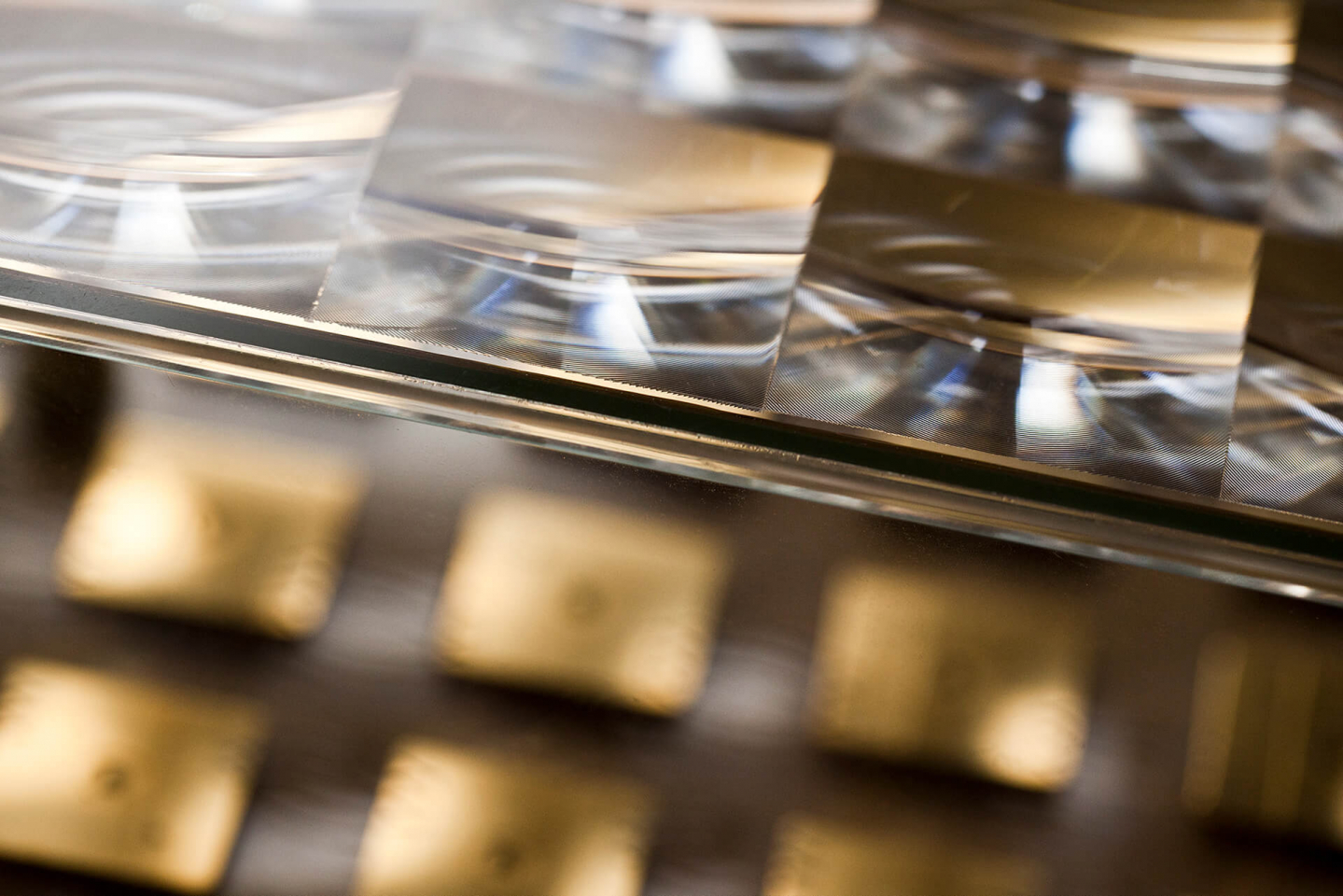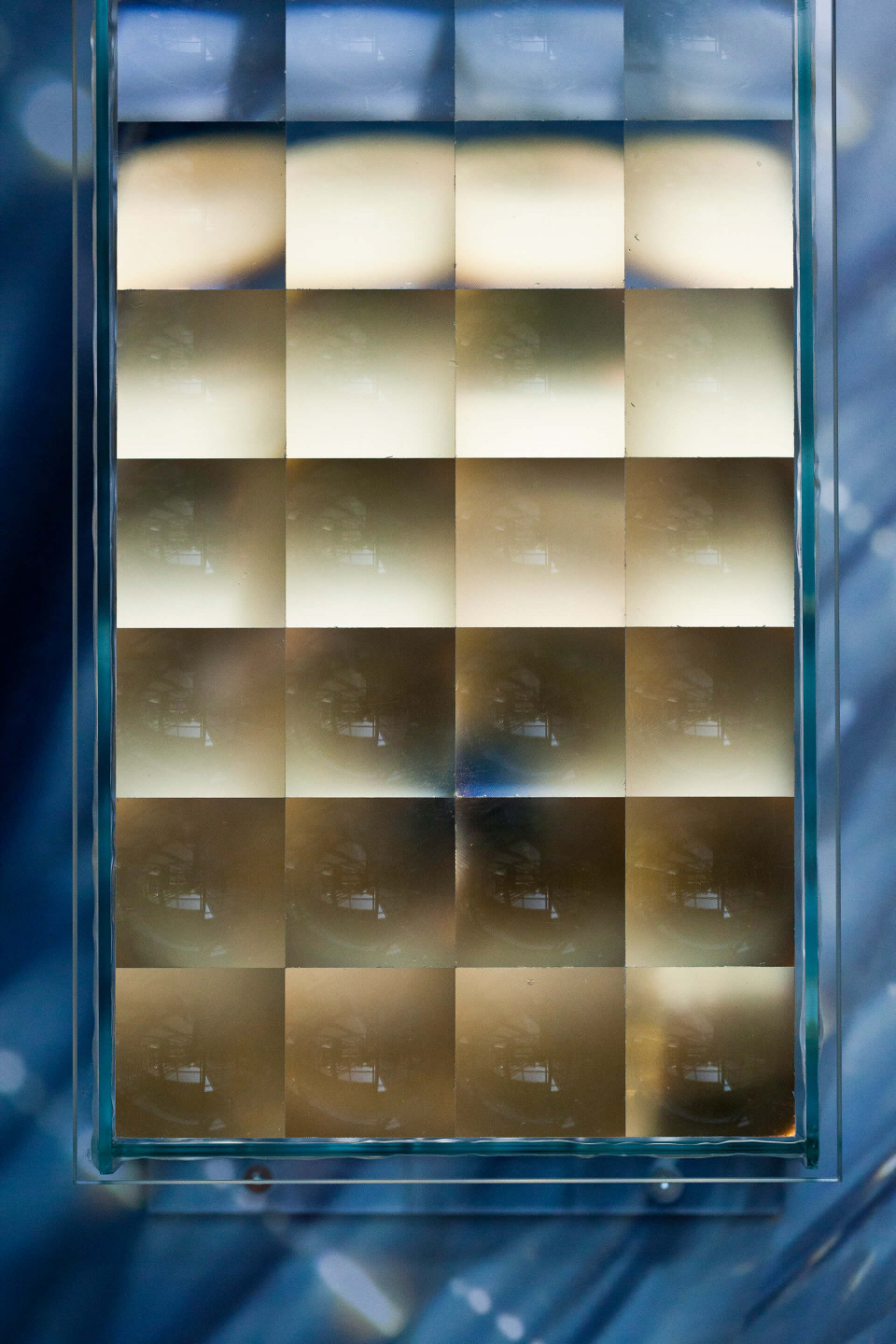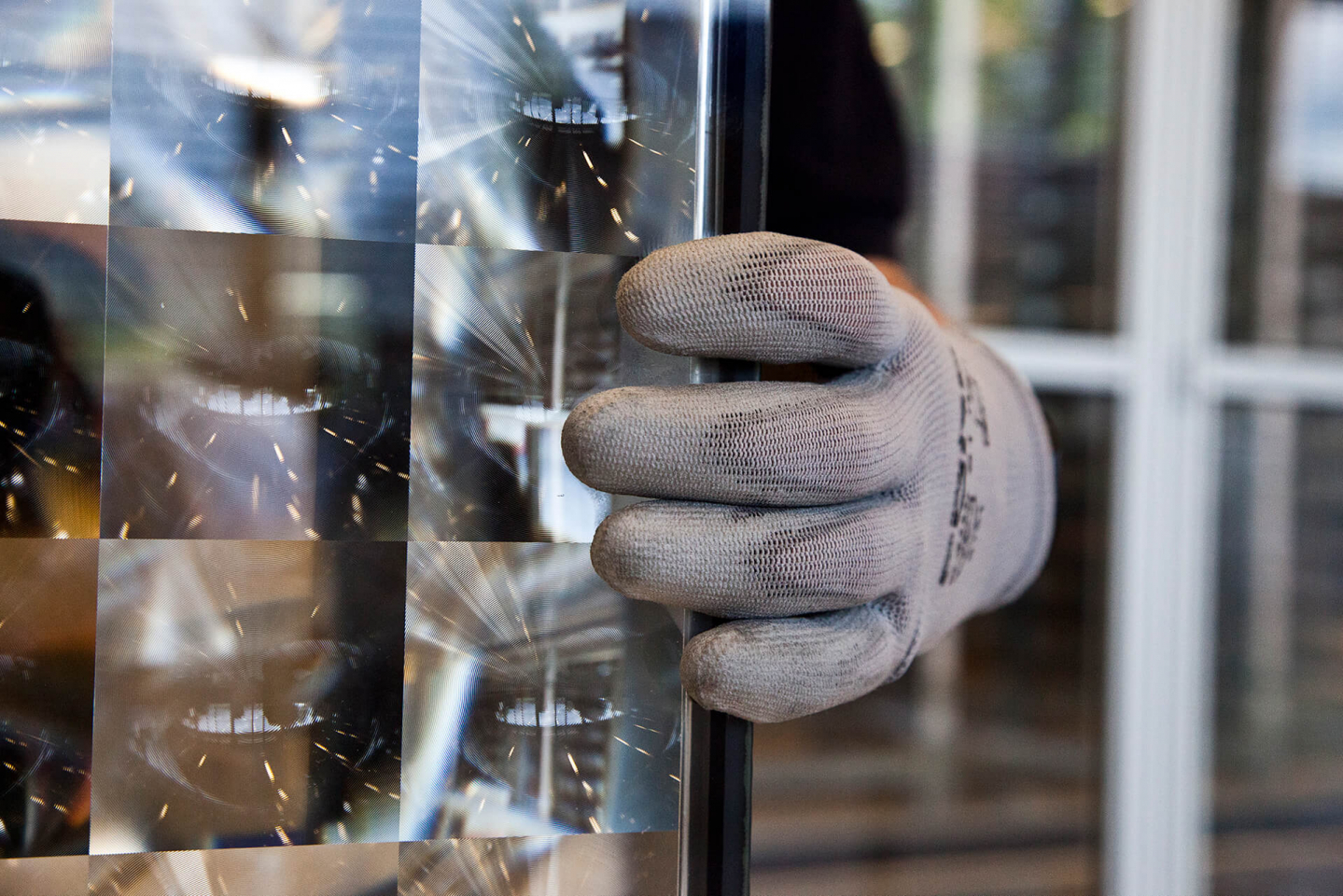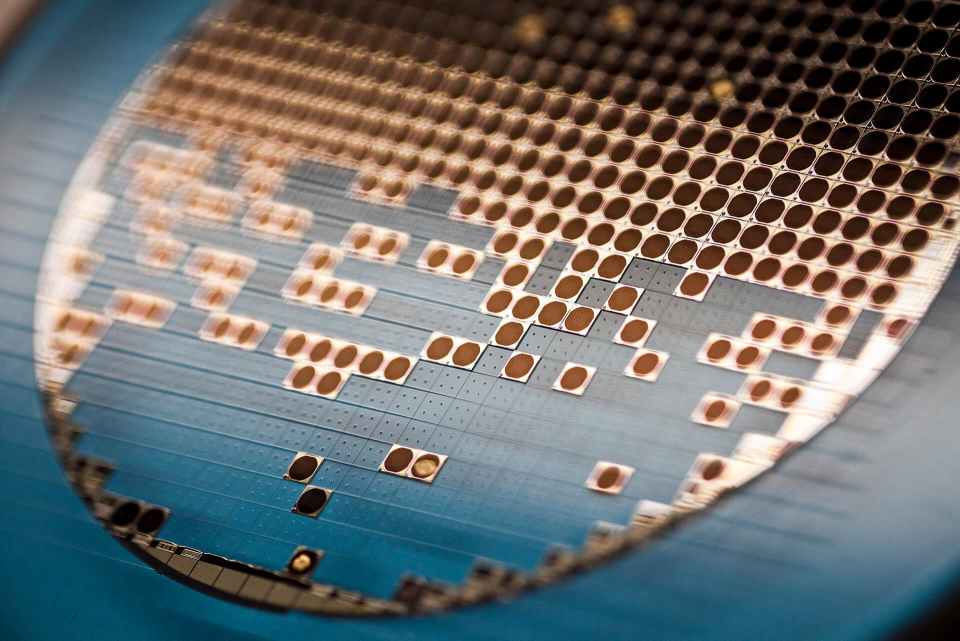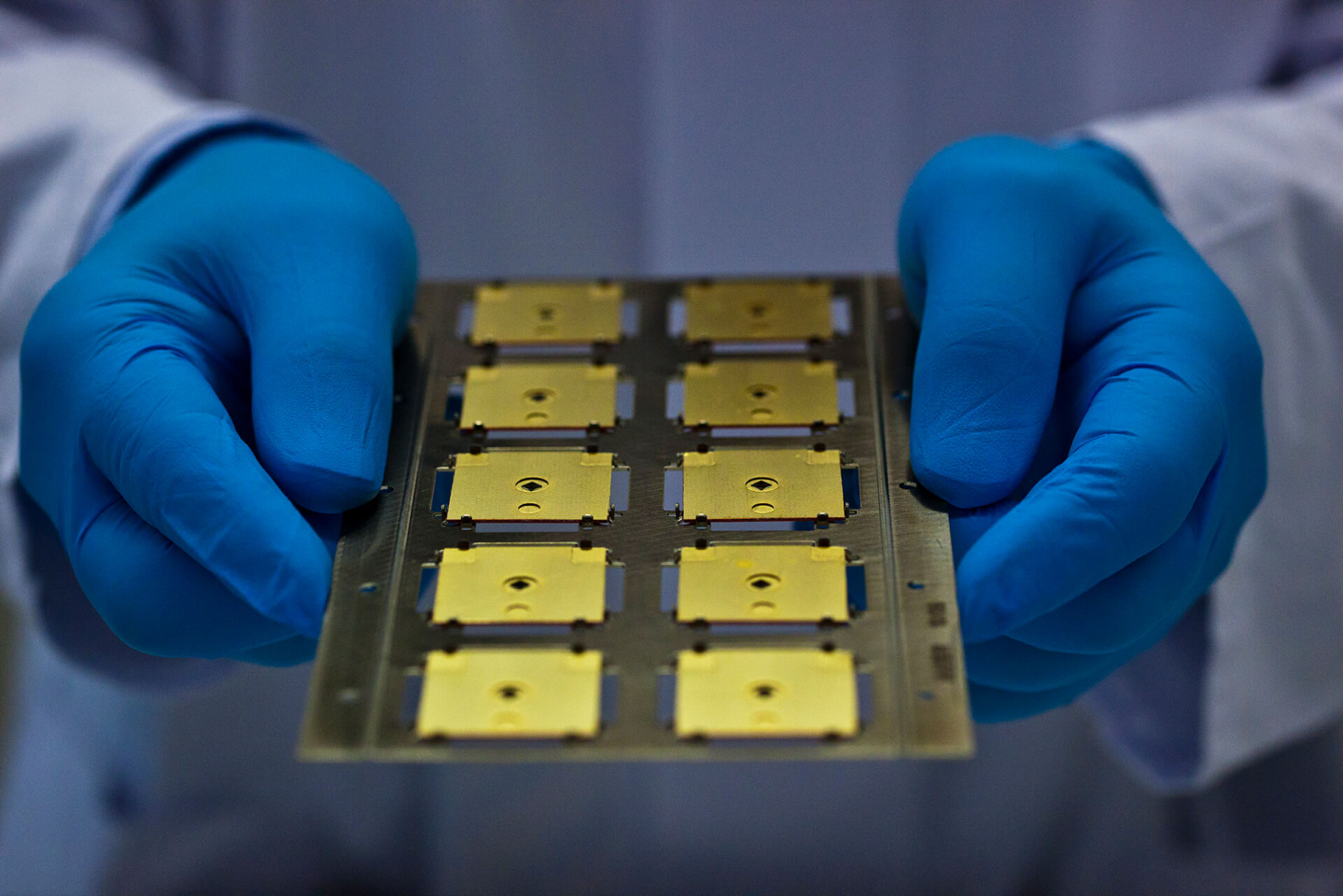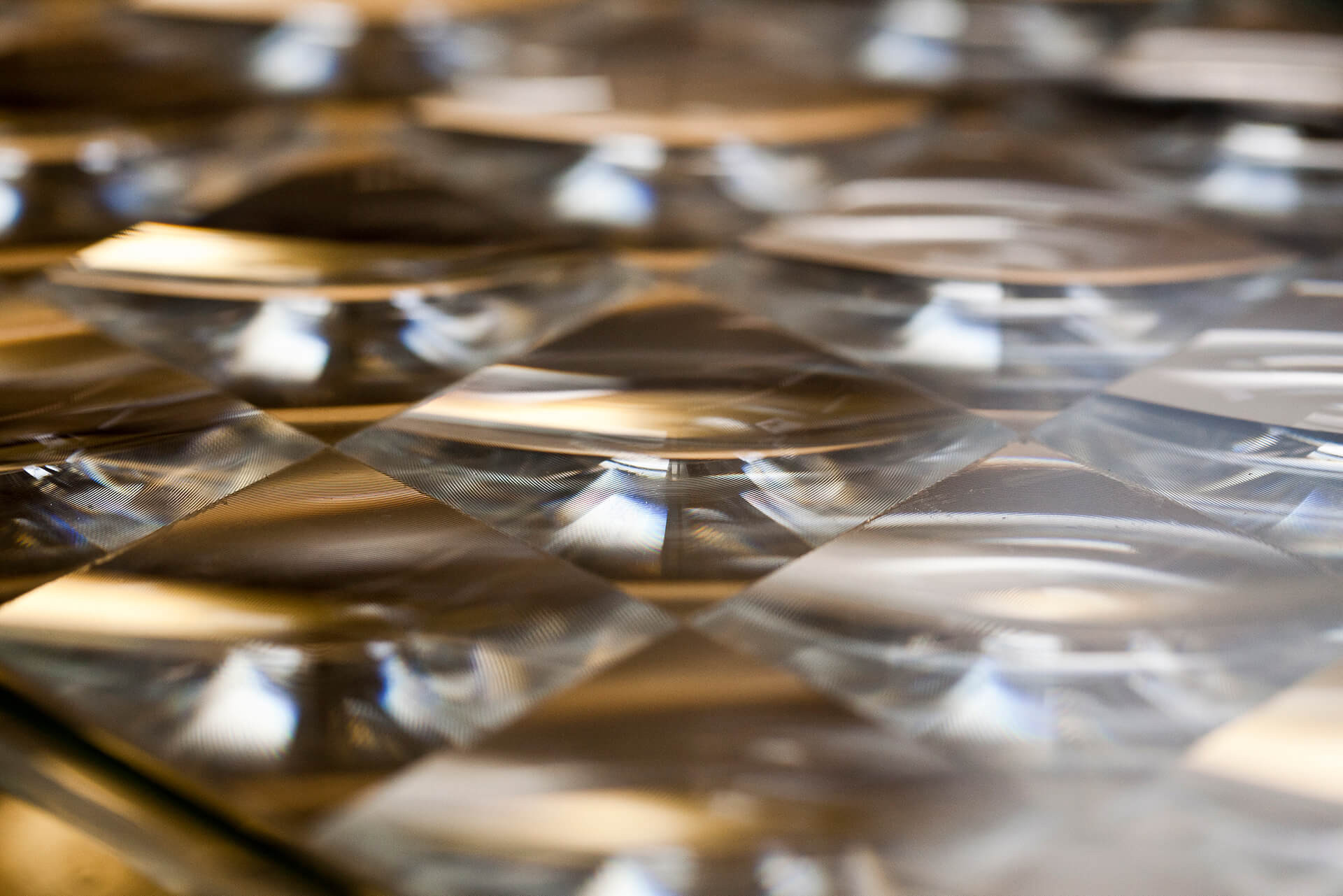
Nominee 2011
Geballtes Sonnenlicht
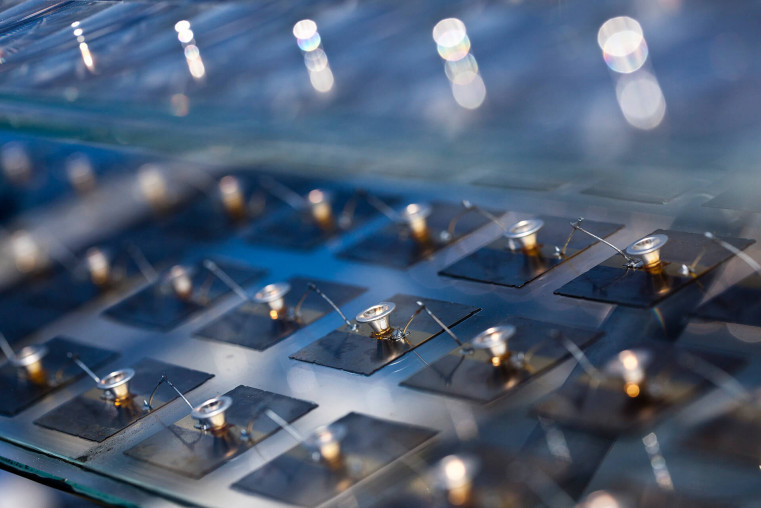
Hans Lerchenmüller, Dr. Andreas W. Bett und Dr. Klaus-Dieter Rasch discovered the answer: they increased the energy efficiency of the utilization of sunlight by stacking three small solar cells made of different materials – and then ensured that sunlight was concentrated on the small parts. Hansjörg Lechermüller is the Managing Director of Soitec Solar GmbH in Freiburg, Andreas Bett is Deputy Director of the Fraunhofer Institute for Solar Energy Systems ISE in Freiburg, and Klaus-Dieter Rasch is head of AZUR SPACE Solar Power based in Heilbronn.
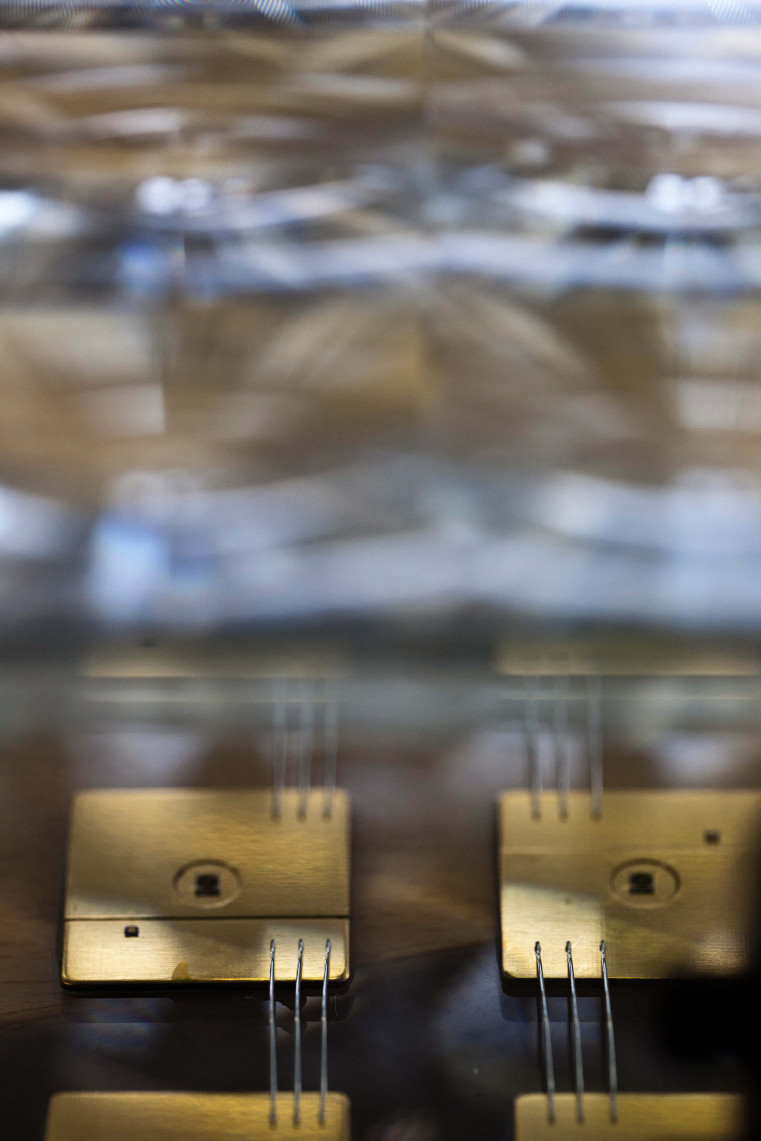
The advantage of the multi-junction solar cells is to be found in the more efficient utilization of sunlight: each of the three cells converts a different part of the solar spectrum. The result is the highest efficiency for every type of solar cell. Yet solar cell production is still comparatively expensive. Consequently, the multi-junction cells were used in the past only for generating electricity onboard satellites. The corresponding technology was developed by experts from Fraunhofer ISE and AZUR Space Solar Power. By concentrating the light, the technology is now also affordable for applications on Earth since they considerably lower the need for expensive materials for the cells.
more details
Resumes
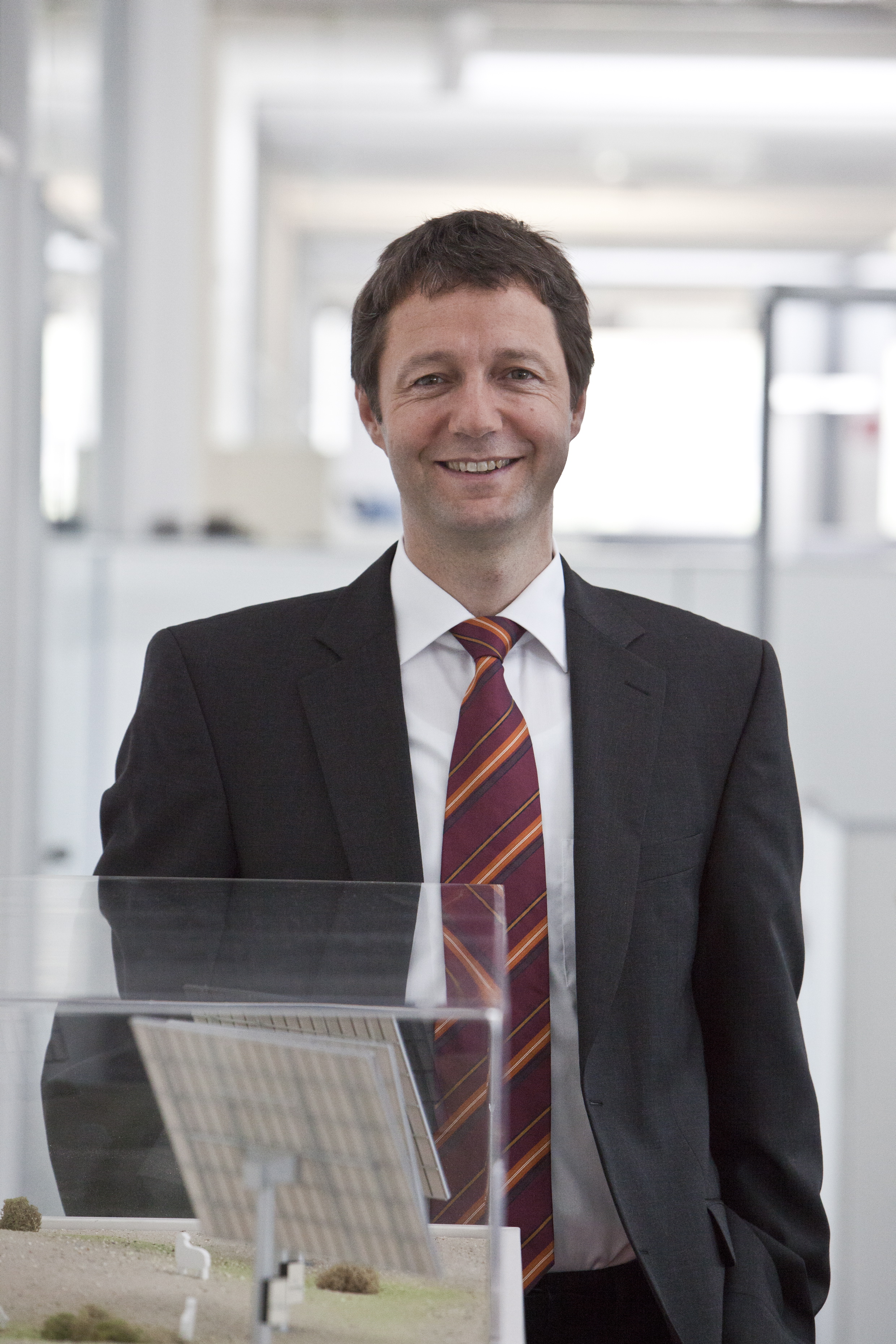
Hansjörg Lerchenmüller
- 23.04.1967
- geboren in Biberach/Riß
- 1986
- Abitur am Kreisgymnasium Riedlingen
- 1987 – 1994
- Studium der Physik an der Universität Karlsruhe (TH)
- 1993 – 1995
- Wissenschaftlicher Angestellter am Institut für Angewandte Physik der Universität Karlsruhe, Entwicklung eines Infrarotdetektors für die NASA-Saturn-Mission CASSINI
- 1995 – 2005
- Fraunhofer-Institut für Solare Energiesysteme ISE; Freiburg
- 1995 – 1999
- Marketing für den Bereich „Mikrostrukturierte Oberflächen“
- 1998 – 2004
- Aufbau und Leitung des Fraunhofer-Marketing-Netzwerks: Schulung und Beratung zu Technologietransfer, Marketing und strategischer Planung
- 2001 – 2004
- Aufbau des Arbeitsgebiets „Solarthermische Kraftwerke“
- 2003 – 2005
- Koordination des Marktbereichs „Solare Kraftwerke“
- 2003 – 2005
- Wirtschaftlichkeits-, Markt- und Technologieanalyse für hochkonzentrierende PV-Systeme
- 2005 – 2009
- Geschäftsführer der Concentrix Solar GmbH
- seit 2009
- Senior Vice President, Customer Group, Solar Energy Business Unit der Soitec Solar GmbH, Freiburg
Weitere Tätigkeiten:
- 1999
- Mitgründer des Fraunhofer Spin-off Unternehmens PSE GmbH
- 2001
- Mitgründer des Fraunhofer Spin-off Unternehmens Holotools GmbH
- 2001 – 2004
- Vorstand des fesa e.V. (Verein zur Förderung erneuerbarer Energie in Südbaden)
- 2005
- Gründer des Fraunhofer Spin-off Unternehmens Concentrix Solar GmbH
- 2008
- Initiator und Mitglied im Board of Directors des CPV Consortiums
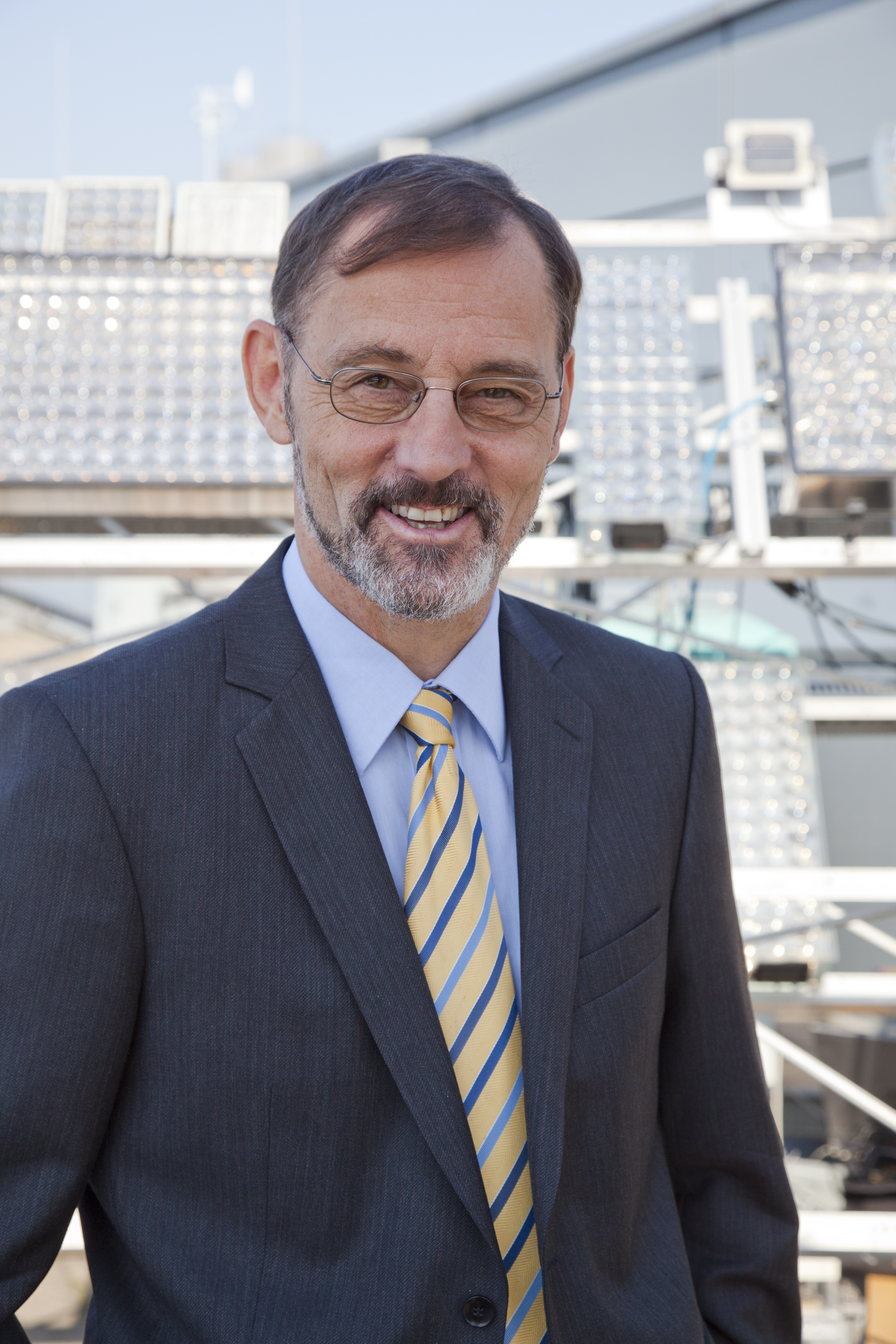
Dr. rer. nat. Andreas W. Bett
- 25.04.1962
- geboren in Furtwangen/Baden-Württemberg
- 1981
- Abitur Otto-Hahn-Gymnasium Furtwangen
- 1981 – 1982
- Wehrdienst
- 1982 – 1989
- Studium der Physik, Mathematik und Sportwissenschaft an der Albert-Ludwigs-Universität in Freiburg
- 1987 – 1988
- Diplomarbeit: “Optimierung epitaktischer GaAs/GaAlAs-Schichtstrukturen für Solarzellen”, Fraunhofer ISE, Freiburg
- 1988
- Diplom Physik
- 1989
- 1. Staatsexamen in Physik und Mathematik für Lehramt an Gymnasien, Albert-Ludwigs-Universität Freiburg
- seit 1988
- Wissenschaftlicher Mitarbeiter am Fraunhofer ISE, Freiburg
- 1992
- Doktorprüfung an der Universität Konstanz; Dissertation: ”Entwicklung von GaAs Solarzellen auf Fremdsubstrat”, Fraunhofer ISE, Freiburg
- seit 1993
- Gruppenleiter ”III-V Solarzellen und Epitaxie” am Fraunhofer ISE, Freiburg
- seit 2007
- Bereichsleiter MST “Materialien – Solarzellen und Technologien” am Fraunhofer ISE in Freiburg
- seit 2009
- Stellvertretender Institutsleiter des Fraunhofer ISE, Freiburg
Weitere Tätigkeiten:
- Mitglied der IEC Working group TC82 WG7; gewählter Vorstand des CPV-Konsortiums; Mitglied der Europäischen PV-Plattform WG3, Mitglied der DPG und IEEE
- 2006
- Mitbegründer von Concentrix Solar in Freiburg. Concentrix Solar (jetzt Soitec Solar GmbH) gehört mittlerweile zu den weltführenden CPV Unternehmen
- 2010
- Mitglied mehrerer wissenschaftlicher Konferenzkomitees (IEEE PVSC, EC-PVSC, Int.-CPV, TPV); Allgemeiner Vorsitz der CPV-6, der sechsten Internationalen Konferenz zu Konzentratorphotovoltaiksystemen in Freiburg
Ehrungen:
- 2009
- 17. Europäischen Becquerel-Preis - Auszeichnung von der Europäischen Kommission für herausragende Leistungen in der Fotovoltaik
- 2010
- Joseph-von-Fraunhofer-Preis
- 2010
- EARTO Innovation Prize
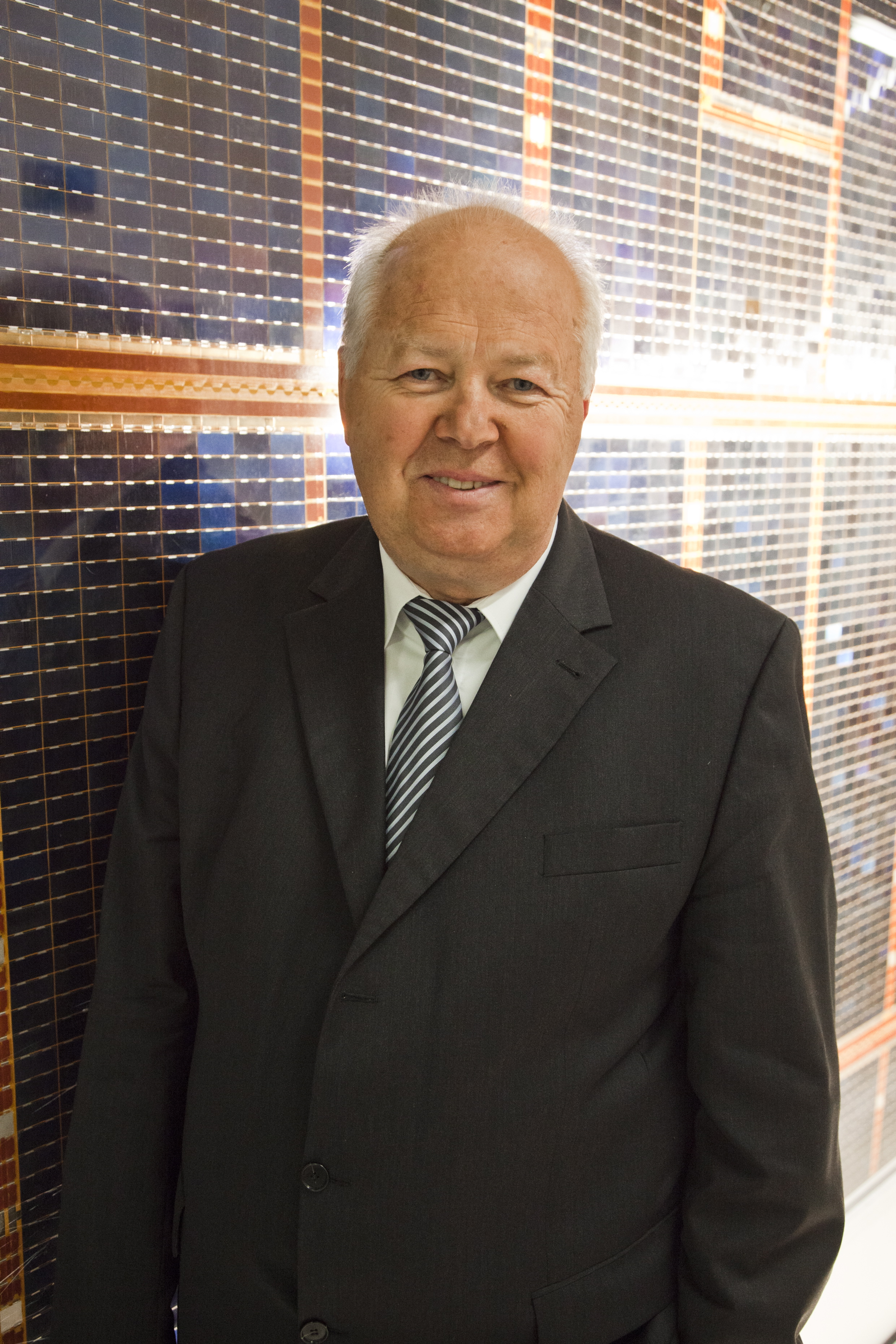
Dr. rer. nat. Klaus-Dieter Rasch
- 27.12.1947
- geboren in Ellwangen/Jagst
- 1966 – 1971
- Studium der Physik an der Technischen Universität Stuttgart
- 1971
- Diplomarbeit Thema: Abschrecken und Erholen dünner Wolframdrähte
- 1972 – 1977
- Leiter Kristallzucht, Max-Planck-Institut für Metallforschung, Institut für Physik, Stuttgart
- 1976
- Promotion Thema: Untersuchung von Leerstellen in Wolfram
- 1978 – 1991
- Leitungsfunktionen in Entwicklung, Produktion und Management bei AEG-Telefunken AG, bzw. TELEFUNKEN electronic GmbH, Heilbronn
Arbeitsschwerpunkt Silicium-Solarzellen
- 1991 – 1994
- Leiter Produktzentrum Solarzellen
TELEFUNKEN Systemtechnik GmbH, Ulm - 1994 – 2000
- Leiter Produktzentrum Solarzellen
Angewandte Solarenergie – ASE GmbH, Alzenau - 2001 – 2002
- Direktor, Business Unit Raumfahrt
RWE Solar GmbH, Alzenau - 2002 – 2006
- Geschäftsführer, RWE Space Solar Power GmbH, Heilbronn
- seit 2006
- Geschäftsführer, AZUR SPACE Solar Power GmbH, Heilbronn
Weitere Tätigkeiten:
- 2000 – 2008
- Mitglied des Beirats am Zentrum für Angewandte Energieforschung (ZAE), München
- seit 2008
- Kurator am Fraunhofer Institut für Solare Energiesysteme ISE, Freiburg
Contact
Spokensperson
Herr Hansjörg Lerchenmüller
Senior Vice President Customer Group
Solar Energy Business Unit
Soitec Solar GmbH
Bötzinger Straße 31
79111 Freiburg
Tel.: +49 (0) 761 / 21 41 08 21
Fax: +49 (0) 761 / 21 41 08 29
Mobil: +49 (0) 152 / 22 73 66 21
E-Mail: hansjoerg.lerchenmueller@soitec.com
Web: www.soitec.com
Press
Karin Schneider
Leiterin Presse und Öffentlichkeitsarbeit
Fraunhofer Institut für Solare Energiesysteme ISE
Heidenhofstraße 2
7911 Freiburg
Tel.: +49 (0) 761 / 45 88 51 47
Fax: +49 (0) 761 / 45 88 91 47
Mobil: +49 (0) 171 / 55 29 408
E-Mail: karin.schneider@ise.fraunhofer.de
Web: www.ise.fraunhofer.de
More Company Contacts
Cornelia Senghaas
Assistentin Geschäftsführung
AZUR SPACE Solar Power GmbH
Theresienstr. 2
74072 Heilbronn
Tel.: +49 (0) 7131 / 67 29 94
Fax: +49 (0) 7131 / 67 27 27
Mobil: +49 (0) 172 / 17 10 777
E-Mail: cornelia.senghaas@azurspace.com
Web: www.azurspace.com
Sina Schumacher
Marketing and Sales Assistant
Solar Energy Business Unit
Soitec Solar GmbH
Bötzinger Straße 31
79111 Freiburg
Tel.: +49 (0) 761 / 21 41 08 15
Fax: +49 (0) 761 / 21 41 08 29
E-Mail: sina.schumacher@soitec.com
Web: www.soitec.com
A description provided by the institutes and companies regarding their nominated projects
As in standard photovoltaic modules, Concentrix™ Modules use the sun’s light to produce electrical energy. The difference is that their conversion efficiencies are more than double as high as those of traditional modules. This is achieved by separating the two functions of a standard photovoltaic module: the collection of light and the conversion thereof. In Concentrix™ Modules, Fresnel lenses bundle sunlight and concentrate it onto small, highly-efficient, multi-junction solar cells. These, in turn, convert the light into electrical energy. The principle behind the module was developed at the Fraunhofer Institute for Solar Energy Systems ISE in Freiburg and served as the gateway for Soitec Solar, a spin-off company of Fraunhofer ISE. Initially started under the name Concentrix Solar, the company brought this technology from the laboratory to industrial series production in just a few years. Today, ConcentrixTM technology is successfully implemented in solar power plants located in many sunny regions. The technology for the highly-efficient, multi-junction solar cells was also developed at Fraunhofer ISE and is being put into industrial production by AZUR SPACE Solar Power.
The Changeover to Solar Energy
The changeover in our energy supply – away from fossil fuels and towards renewable energy sources – is one of the principal tasks facing humanity in the 21st century. In order to safeguard the basis of our existence for the future, global climate change must be contained and provision for our future energy demands must be secured over the long term. Photovoltaics, a technology in which sunlight is directly converted to electrical energy, will play a fundamental part in an energy supply based on renewable energy sources. The sun is an inexhaustible source of energy. Over the past few years, photovoltaics has experienced large market growth of over 40% per year. As a result, marked cost reductions in photovoltaically-generated power were achieved. Concentrator photovoltaics will enable a further radical decrease in costs to be realized, meaning that within a few years, solar energy systems installed in locations across the global sun belt will compete with conventional electricity generation.
The Overall Picture
On today’s photovoltaic market, only solar cells based on one semiconductor material are available. More than 85% of the solar PV modules on the market are made from crystalline silicon. Other semiconductor materials find application in various thin-film technologies. Today, silicon solar PV modules typically have a module efficiency of 14%. If several solar cells made from different semiconductor materials are stacked on top of each other, however, the solar spectrum can be converted into electricity at a higher energy efficiency. Depending on the number of stacked cells used, it will thus be possible to achieve future efficiencies of over 50%. Multi-junction solar cells were initially developed by Fraunhofer ISE together with AZUR SPACE Solar Power for space applications, and were also exploited by AZUR SPACE Solar Power to provide power supplies for telecommunication satellites in commercial applications.
Straight to the Point
In order to exploit the high efficiency of multi-junction solar cells for terrestrial applications, researchers at Fraunhofer ISE developed a new solar cell and ultimately, in concentrator photovoltaics, a completely new module technology for the terrestrial market. In these modules, solar cells with a special new structure are used. At a solar concentration of 545 kW/m², a world record efficiency of over 41% was reached in 2009 with this cell technology. In order to produce the record cell, the Freiburg-based scientists stacked three different subcells on top of one another, composed of gallium indium phosphide, gallium indium arsenide and germanium respectively. Each of these III-V compound semiconductors utilizes a different range of wavelength within the solar spectrum. The complex inner structure of the ultra-thin cell is not evident from its thickness of only a few μm. Special Fresnel lenses measuring just 3 mm in diameter are situated above the tiny cells and concentrate the incident sunlight by a factor of over 500. To prevent overheating, the cells are mounted on a metal heat sink that distributes the heat. In developing the lenses, Fraunhofer ISE worked together with the Ioffe Institute in St. Petersburg. Using an inexpensive procedure, a lens structure is embossed onto a thin silicone film. The lenses and solar cells are then combined together in the module. The modules are mounted onto trackers that follow the daily path of the sun. Since concentrated sunlight is used in this system, solar power plants using this technology are best suited to regions that have a large fraction of direct solar radiation, where they produce low cost solar energy.
Solar Electric Power Stations in Sunny Regions
Concentrix Solar GmbH, today Soitec Solar GmbH, was founded in 2005 as a spin-off of Fraunhofer ISE in order to drive forward the industrial processing technology for Concentrix™ modules which had originated at Fraunhofer ISE. Further development of this technology, consistently carried out by the three partners Fraunhofer ISE, AZUR Space Solar Power and Soitec, has, to date, led to AC system efficiencies of over 25%, where the energy generated is fed into the grid. This is nearly double the efficiency of conventional photovoltaic systems based on silicon. Today, Soitec holds a leading position in this young, emerging market thanks to the development work carried out at Fraunhofer ISE over many years. Due to the positive technological success exemplified by top worldwide efficiencies for solar cells, modules and systems, the companies AZUR SPACE Solar Power and Soitec have registered large economic growth in recent years and have also generated numerous new jobs.
Concentrator photovoltaics, abbreviated as CPV, opens up a totally new field of technology within photovoltaics. Until now, concentrated solar radiation was only used in solar thermal power plants, where parabolic mirrors are used to heat a transfer medium that drives a turbine to produce electricity. In comparison, concentrator photovoltaics converts solar energy directly into electricity and at much higher efficiencies. Compared to conventional photovoltaic technologies, CPV does not exhibit the usual power losses associated with high outdoor temperatures. Furthermore, it produces a consistently large amount of electricity over the course of the day. Due to this, it is predestined for use in sunny and very hot regions. In spite of the high solar concentrations, the system operates successfully without active cooling and without the use of water. Particularly in hot, desert climates, this is an enormous advantage. In addition, the system can be constructed in modular fashion, which permits scalable investment costs. A further advantage is the small amount of area required for the systems as well as the possibility of using land for a dual purpose. For example, such systems can be combined with agricultural activities due to the low area of land that is sealed. Above and beyond this, the technology is one of the most environmentally-friendly available, it has a short energy payback time and, for the most part, the components are made from recyclable materials such as glass and steel.
Consistently Driving Technology Forward
The rapid transfer of concentrator photovoltaics from the laboratory to industrial production was possible thanks to consistent, close collaboration between Fraunhofer’s researchers and their industrial partners AZUR SPACE Solar Power and Soitec. The spin-off company founded by the Fraunhofer Institute played a considerable role in introducing Concentrix™ technology to the market. Indeed, the technology’s impressive success led to a takeover of Concentrix Solar by Soitec, although all three partners continue to drive the technology forward. The development of new product generations, both with regard to solar cells and modules, is vital in order to ensure further efficiency increases and cost reductions. Thanks to intensive research and development activities, and their cooperation with Fraunhofer researchers, the industrial companies are able to achieve short implementation cycles for innovative designs and production technology. Both Soitec and Fraunhofer ISE are represented on the board of directors of industry organization CPV Consortium.
About Azur Space
AZUR SPACE Solar Power, based in Heilbronn, is a European market leader and global player in the development and production of high efficiency solar cells for space and terrestrial CPV applications.
AZUR SPACE has been involved in the field of space-based solar cells for more than 40 years, and during this time has successfully delivered solar cell technology for over 400 satellites. At present, AZUR SPACE is focusing on bringing it's latest solar cell technology back from space for terrestrial applications. With materials and structures originally developed to power satellites for telecommunications and Earth observation – for scientific, exploratory and navigation missions – AZUR SPACE solar cells are now also demonstrating their excellent performance in terrestrial applications. State-of-the-art, triple-junction GaAs cells for CPV applications achieve 40% efficiency under concentration, based on production experience (space and CPV) equivalent to 1,000 MW of solar power. Efficiencies of up to 50% are expected over the coming years with innovative multi-junction concepts. For more information, please visit: www.azurspace.com
About Fraunhofer ISE
With a staff of 1100, the Fraunhofer Institute for Solar Energy Systems ISE, based in Freiburg, is the largest solar energy research institute in Europe. Fraunhofer ISE is committed to promoting energy supply systems which are sustainable, economic, safe and socially just. It creates technological foundations for supplying energy efficiently and on an environmentally sound basis in industrialized, threshold and developing countries. To this end, the institute develops materials, components, systems and processes for a total of seven different business areas: Energy-efficient Buildings and Technical Building Components, Applied Optics and Functional Surfaces, Solar Thermal Technology, Silicon Photovoltaics, Alternative Photovoltaic Technology, Renewable Power Generation and Hydrogen Technology. Fraunhofer ISE has several accredited test facilites. For more information, visit: www.ise.fraunhofer.de
About Soitec
Soitec (Euronext Paris) is an international manufacturing company, a world-leader in generating and manufacturing revolutionary semiconductor materials, at the frontier of the most exciting energy and electronic challenges. Soitec’s products include substrates for micro and nanoelectronics (most notably SOI: Silicon-on-Insulator) and concentrator photovoltaics (CPV). Through the acquisition of Concentrix Solar in 2009, Soitec entered the CPV market and has become a leading manufacturer of CPV power plants. The company’s core technologies are Smart Cut™, Smart Stacking™ and Concentrix™, as well as expertise in epitaxy. Applications include consumer and mobile electronics, microelectronics-driven IT, telecommunications, automotive electronics, lighting products and large scale solar power plants. Soitec has manufacturing plants and R&D centers in France, Singapore, Germany, and the United States. For more information, please visit: www.soitec.com
The right to nominate outstanding achievements for the Deutscher Zukunftspreis is incumbent upon leading German institutions in Science and Industry as well as foundations.
The project “Concentrator Photovoltaics with highest efficiency solar cells” was nominated by the Fraunhofer-Gesellschaft e.V.
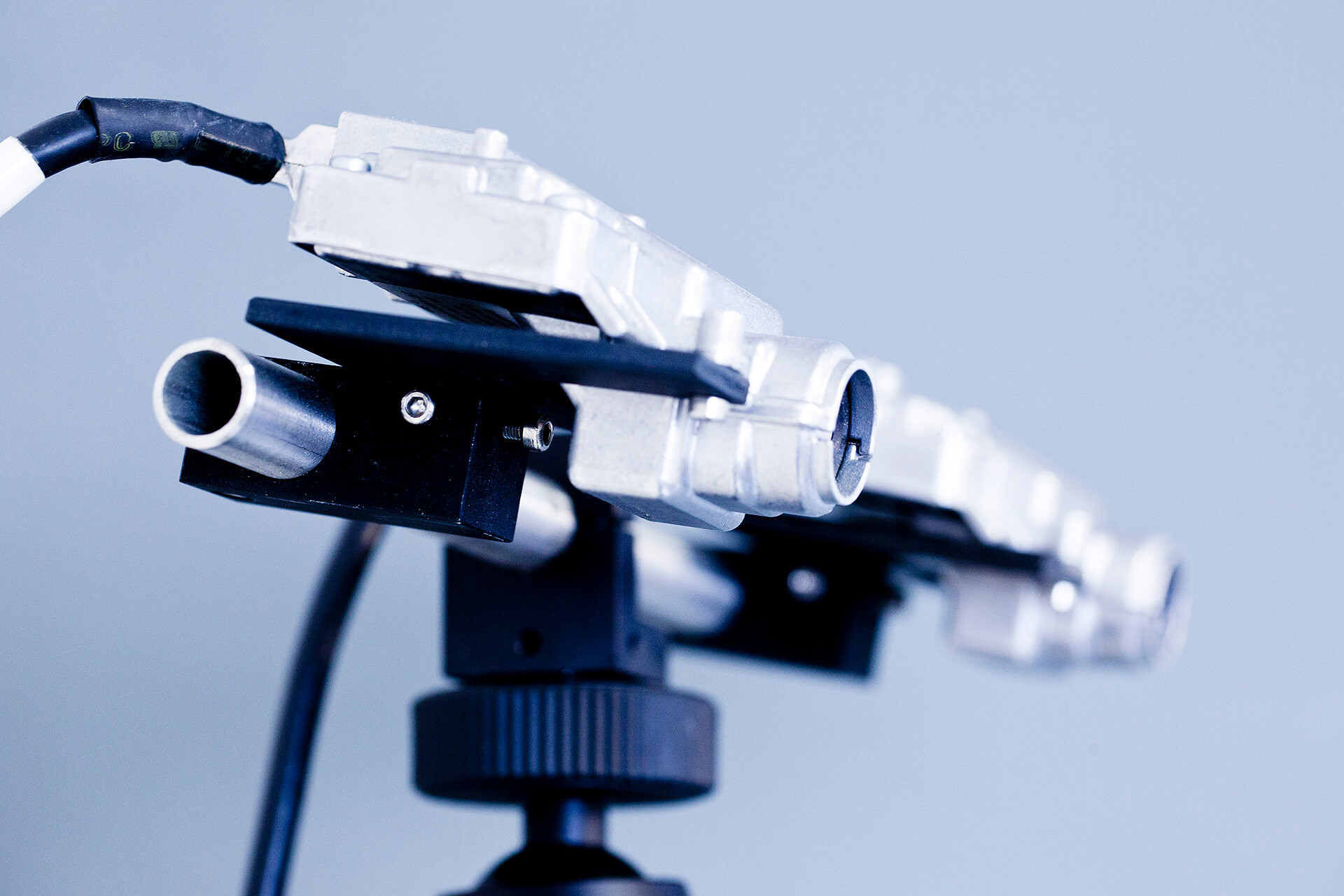

 Gebärdensprache
Gebärdensprache
 Leichte Sprache
Leichte Sprache


